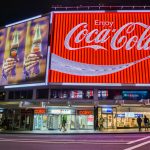10 Iconic Companies That Rebounded After Bankruptcy: Lessons in Strategic Revival
In an era defined by economic volatility and relentless disruption, the specter of financial distress looms large for businesses worldwide. Yet, history offers a powerful counter-narrative: for some of the world's most iconic brands, bankruptcy wasn't a death sentence, but a crucible for profound rebirth. These remarkable turnarounds offer invaluable, enduring lessons in resilience, strategic thinking, and the transformative power of reinvention for any enterprise navigating uncertain times.
Here’s a close look at ten remarkable companies that not only survived but thrived after facing the brink of financial ruin, providing crucial insights into the common factors that drive such comebacks.
1. Apple: The Near Miss That Changed Tech History
- Bankruptcy Timeline: Apple Inc. never officially filed for Chapter 11, but by 1997, the tech pioneer was teetering on the edge of insolvency. The company had recorded over £800 million (approx. $1 billion USD at the time) in losses in a single year, its product line was bloated and confusing, market share was plummeting, and competitor Microsoft's Windows dominated the computing landscape. Industry experts widely predicted its imminent demise.
- The Rebound: The visionary return of co-founder Steve Jobs in 1997 served as the ultimate catalyst. Jobs drastically simplified the product line, ruthlessly cut costs, and crucially, secured a £120 million (approx. $150 million USD) investment from rival Microsoft – a move seen as a lifeline. This financial injection, coupled with Jobs' relentless focus on innovation and elegant design (leading to revolutionary products like the iMac, iPod, and later, the iPhone and iPad), catapulted Apple into an unprecedented meteoric rise, making it one of the world's most valuable companies.
- Key Recovery Lever: A radical leadership reset and critical financial lifeline, combined with a revolutionary focus on user experience, design, and ecosystem development that redefined its industry.
2. General Motors: A Government-Backed Automotive Rebirth
- Bankruptcy Timeline: General Motors (GM), once the epitome of American industrial might, filed for Chapter 11 bankruptcy protection on June 1, 2009, amidst the deepest recession in over 50 years. Decades of declining market share, high legacy production costs, unsustainable labor agreements, and a devastating credit market collapse left the automotive giant with nearly £138 billion (approx. $173 billion USD) in debt. It stood as one of the largest corporate bankruptcies in U.S. history.
- The Rebound: GM underwent a swift, government-backed restructuring. The U.S. Treasury provided a massive £40 billion (approx. $51 billion USD) federal bailout in exchange for an equity stake, enabling a "pre-packaged" bankruptcy that allowed a "New GM" to purchase the operational assets of the old, burdened company. This process shed billions in unsustainable debt, closed thousands of dealerships, and streamlined its brand portfolio. While the U.S. Treasury exited its investment in December 2013, recovering £31.6 billion (approx. $39.7 billion USD), the direct cost to taxpayers was estimated at £8.8-9.6 billion (approx. $11-12 billion USD), highlighting the significant public investment required for systemic rescues.
- Key Recovery Lever: Unprecedented federal support and a drastic strategic restructuring that created a leaner, more competitive automaker capable of operating in a new global landscape.
Find out more about the CEO of General Motors in 2025.

Mary Barra CEO of General Motors
3. Ally Financial (formerly GMAC): A Lender's Transformation After Crisis
- Bankruptcy Timeline: As the financing arm of General Motors, GMAC (General Motors Acceptance Corporation) was profoundly intertwined with the struggles of both the auto industry and the subprime mortgage crisis. While its core banking entity avoided a full Chapter 11 filing in 2009, its significant mortgage unit, Residential Capital (ResCap), filed for a prepackaged bankruptcy in May 2012 to shed legacy mortgage risks and billions in debt stemming from the housing market collapse. The parent company as a whole was on the brink due to its massive exposure.
- The Rebound: GMAC received substantial Troubled Asset Relief Program (TARP) assistance, amounting to £13.6 billion (approx. $17.2 billion USD). The company strategically rebranded to Ally Financial, deliberately distancing itself from its troubled automotive and mortgage past. It systematically divested its problematic ResCap mortgage unit and other non-core international businesses to focus intensely on its profitable auto financing business and expand its highly successful online direct banking operations (Ally Bank). By March 2023, it had become a highly profitable, independent financial institution valued around £6 billion (approx. $7.6 billion USD).
- Key Recovery Lever: Significant government bailout, a strategic rebranding, the decisive shedding of non-core, problematic assets, and a focused pivot to simplified retail banking and streamlined auto finance.
4. Chrysler: The Phoenix from Detroit, Forged in Fiat
- Bankruptcy Timeline: Chrysler LLC, like its Detroit counterparts, faced an existential threat from the 2008 financial crisis and decades of accumulating operational challenges. Reeling from a 30% decline in auto sales in 2008 and burdened with £44 billion (approx. $55.2 billion USD) in liabilities against only £31.3 billion (approx. $39.3 billion USD) in assets, it filed for Chapter 11 bankruptcy on April 30, 2009.
- The Rebound: Chrysler's survival was orchestrated through a rapid, government-overseen pre-packaged bankruptcy, with the U.S. government providing £10 billion (approx. $12.5 billion USD) in aid. Crucially, this came with the condition of a strategic partnership with Italian carmaker Fiat. The deal allowed Fiat to take a controlling stake in the "New Chrysler," injecting new management, much-needed technological expertise (especially in smaller, fuel-efficient vehicles), and a vital global product development perspective. Chrysler successfully repaid £8.9 billion (approx. $11.2 billion USD) of government aid and formally merged with Fiat in 2014 to form Fiat Chrysler Automobiles (FCA), now part of Stellantis.
- Key Recovery Lever: Substantial government intervention and a transformative international partnership that injected fresh capital, technology, and management expertise to facilitate a rapid restructuring.
5. Marvel Entertainment: From Comic Books to Cinematic Universe Dominance
- Bankruptcy Timeline: Marvel Entertainment filed for Chapter 11 bankruptcy in December 1996. The company, which had diversified aggressively into speculative ventures like trading cards and toys, suffered from a bubble in the comics market that burst in the mid-1990s, coupled with significant debt from rapid, often ill-advised, acquisitions and internal mismanagement. The company was further hampered by a fierce battle for corporate control between rival investors Ronald Perelman and Carl Icahn.
- The Rebound: The turnaround was not immediate but came through a radical strategic pivot. After emerging from bankruptcy in 1998, under new leadership, Marvel shifted its focus from merely publishing comics to aggressively leveraging its vast library of intellectual property. This included a visionary move to produce its own films, rather than just licensing characters. This led to the unexpected blockbuster success of Iron Man (2008), which spiraled into The Avengers and Guardians of the Galaxy. This unprecedented cinematic success ultimately led to its acquisition by Disney in 2009 for £3.2 billion (approx. $4 billion USD), becoming the undisputed foundation of the multi-billion-dollar Marvel Cinematic Universe.
- Key Recovery Lever: A dramatic strategic re-orientation towards media adaptation and highly successful visionary licensing deals and internal film production, unlocking immense untapped intellectual property value.
Related: What Is the Highest-Grossing Marvel Movie?

6. Six Flags: Reorganizing for Rollercoaster Rides and Renewed Profitability
- Bankruptcy Timeline: Six Flags, Inc., one of the largest regional theme park operators globally, filed for Chapter 11 bankruptcy protection on June 13, 2009. The company was struggling under an unsustainable £2.16 billion (approx. $2.7 billion USD) debt burden, largely inherited from a previous management team's aggressive acquisition strategy. It could no longer service or refinance this debt amidst a challenging economic climate and declining attendance.
- The Rebound: The bankruptcy allowed Six Flags to shed approximately £1.44 billion (approx. $1.8 billion USD) in debt, significantly reorganizing its financial structure. It emerged from bankruptcy in 2010 as Six Flags Entertainment Corporation, under new ownership (primarily its former secured lenders) and a renewed focus on core park operations. The company strategically invested in new attractions, improved park cleanliness and safety, and implemented a more streamlined, family-friendly strategy, successfully attracting more visitors and driving consistent profitability.
- Key Recovery Lever: Aggressive debt restructuring and a simplified capital structure, coupled with renewed strategic investment in core attractions and improved park operations and guest experience.
7. Texaco: A Legal Blow and Strategic Consolidation
- Bankruptcy Timeline: Texaco, once one of America's largest oil companies, filed for Chapter 11 bankruptcy on April 12, 1987. This highly unusual move for a company of its size was a direct consequence of losing a staggering £8.8 billion (approx. $11 billion USD) lawsuit to Pennzoil over Texaco's contentious acquisition of Getty Oil. The judgment, significantly exceeding Texaco's ability to pay, forced it into court protection.
- The Rebound: Under bankruptcy protection, Texaco successfully negotiated a massive £2.4 billion (approx. $3 billion USD) settlement with Pennzoil, a fraction of the original judgment. This critical legal resolution allowed the company to reorganize its finances and streamline operations. After emerging from bankruptcy in 1988, Texaco focused intensely on its core oil and gas exploration, production, and refining businesses. This strategic consolidation and renewed financial stability ultimately paved the way for its merger with Chevron in 2001, forming ChevronTexaco (later reverting to Chevron), creating one of the world's largest integrated energy companies.
- Key Recovery Lever: Resolution of a crippling legal judgment, followed by comprehensive financial reorganization and strategic consolidation within its core industry.
Related: ERP Modernization: When to Upgrade and How to Manage Change for Strategic Advantage
8. Sbarro: Twice Bankrupt, Twice Reborn with a New Concept
- Bankruptcy Timeline: Sbarro, the Italian-American casual dining chain synonymous with mall food courts, filed for Chapter 11 bankruptcy twice: first in 2011 and again in 2014. The initial filing aimed to shed debt and close underperforming locations. The second filing became necessary as the company continued to struggle with declining mall foot traffic, intense competition from rising fast-casual brands, and persistent operational inefficiencies.
- The Rebound: After its second bankruptcy, Sbarro was acquired by private equity investors. The core of its comeback lay in a decisive concept refresh and focused market positioning. It strategically moved away from its expansive, generic menu to emphasize its most popular offering—authentic New York-style pizza—and pivoted towards a streamlined "fast-casual" model. This involved significant store modernizations, an improved pizza recipe, and a strategic focus on higher-traffic, non-mall locations like airports, travel plazas, and university campuses.
- Key Recovery Lever: Aggressive debt reduction through acquisition, a sharp concept refresh, and strategic repositioning in new, more viable markets to meet evolving consumer demands.
9. Ted Baker: A Digital-First Relaunch for a British Fashion Icon
- Bankruptcy Timeline: Ted Baker, the globally recognized British fashion brand, faced severe financial distress culminating in its European retail and e-commerce arm entering administration (a UK equivalent of bankruptcy) in March 2024. This followed years of operational issues, declining sales, high-profile leadership controversies, and critical underfunding from a licensed operating partner, leaving the brand with significant liquidity issues and a bloated physical retail footprint.
- The Rebound: Despite widespread store closures and job losses in its European operations, the core brand was swiftly relaunched online in November 2024 under the ownership of Authentic Brands Group (ABG), which had acquired the intellectual property in 2022. ABG's strategic model focuses on a digital-first approach and a simplified global licensing framework, leveraging the brand's strong heritage and widespread recognition without the heavy overhead of extensive physical retail operations.
- Key Recovery Lever: Strategic acquisition by a global brand licensing powerhouse, followed by a rapid digital-first relaunch and a simplified operational structure focused on brand management and strategic partnerships rather than direct, capital-intensive retail.

10. MG Rover (now MG Motor): A British Marque Reimagined by Foreign Investment
- Bankruptcy Timeline: MG Rover, the last domestically-owned mass-market car manufacturer in the UK, entered administration on April 8, 2005. Decades of chronic underinvestment, a fragmented ownership history, an aging model range, and the collapse of a crucial rescue deal with a Chinese manufacturer (SAIC) led directly to its painful collapse, resulting in the immediate loss of nearly 6,000 jobs.
- The Rebound: The remaining assets of the collapsed MG Rover, including its intellectual property and engineering facilities, were strategically purchased by Nanjing Automobile Group (later acquired by SAIC Motor Corporation, a major Chinese state-owned automaker) in 2005. Under this new Chinese ownership, the iconic British brand was revived as MG Motor. Production resumed in 2007, initially in China, then partially back at Longbridge, UK, before consolidating production primarily in China. The reborn MG Motor now successfully focuses on modern, affordable, and increasingly electric vehicles, particularly SUVs, achieving significant sales success globally, especially in the very UK market where it once originated.
- Key Recovery Lever: Acquisition by a foreign investor (Nanjing Automobile/SAIC) that injected vast capital, new technology, and a global manufacturing and distribution base to revive the legacy brand under a completely new, market-relevant strategy.
Related: Uber’s Leadership Crisis: Transforming From Toxic Culture to Ethical Governance
Unpacking the Turnarounds
- Was the comeback due to one person or just luck? While visionary leadership certainly played a pivotal role (e.g., Steve Jobs at Apple, new management at Sbarro), structural factors were often equally, if not more, critical. These included massive cash infusions, the strategic shedding of legacy liabilities, the willingness to embrace radical transformation, or the opportune timing of an acquisition. Luck, if present, was often about finding the right strategic partner or investor, rather than a random external event.
- Which comeback was the most strategically transformative? Marvel's pivot into film was arguably the most strategically transformative. It fundamentally reimagined its core intellectual property into a multi-billion-dollar cinematic universe, completely changing its business model and valuation, and profoundly influencing the broader entertainment industry.
- What businesses are going bankrupt in 2025?
In 2025, notable bankruptcies include Joann Fabrics, Rite Aid (ongoing restructuring), and Red Lobster, which filed for Chapter 11 in May. The retail and restaurant sectors remain under pressure due to high debt, inflation, and shifting consumer habits. - Is General Motors still in debt? Yes, General Motors (GM) still carries debt, but it's considered manageable. As of 2025, GM has focused on profitability, EV development, and repaying past obligations. The U.S. government exited its stake in 2013, and GM has since regained financial stability.
What It All Means for Businesses Today: The Art of Rebounding Smarter
The stories of these ten companies powerfully demonstrate that bankruptcy isn't necessarily a death knell. Successful turnarounds aren't about avoiding failure at all costs—they're about rebounding smarter. These narratives offer a compelling blueprint for corporate resilience and strategic growth in an uncertain world.
While each narrative is unique, common threads weave through these remarkable comebacks:
- Courageous Leadership: Willingness to make hard choices, simplify, and drive radical change.
- Aggressive Financial Restructuring: Shedding unsustainable debt and optimizing capital structures.
- Radical Strategic Pivots: A readiness to reinvent core business models or focus intensely on profitable segments.
- Timely External Intervention: Often, the injection of external capital, technology, or strategic partnerships proved essential.
For businesses navigating today's intense competitive pressures and economic volatility, these examples offer more than just historical footnotes. They provide a powerful reminder that with astute decision-making, a focus on core value, and the courage to adapt, companies can emerge leaner, more resilient, and ultimately more successful, even from the very brink of collapse. The art of the comeback lies not in avoiding the fall, but in mastering the rise.
Related: How Burt Reynolds Lost His Fortune














